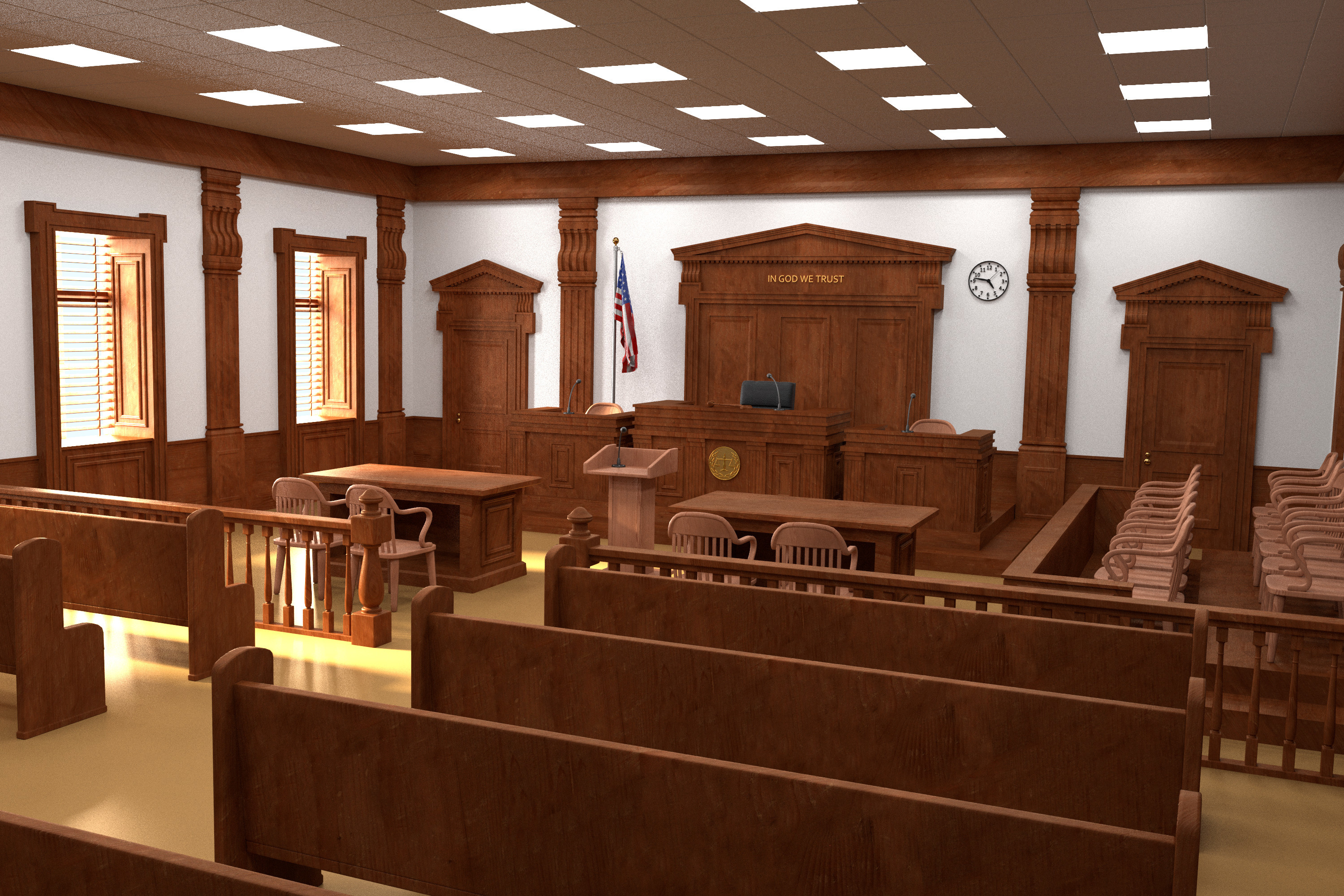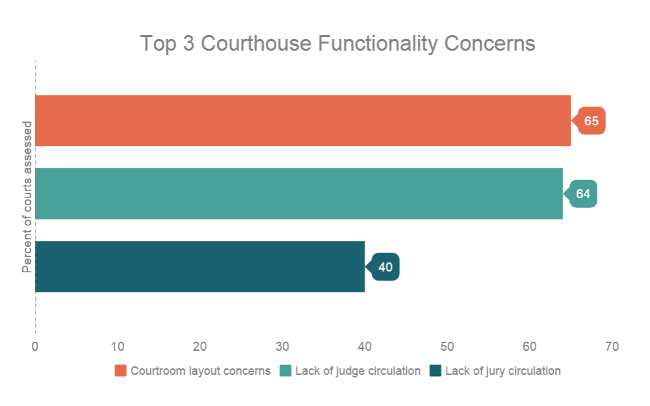Last week, I introduced a new series on quantitative measures used in courthouse planning. Today, I will address the first quantitative measure criterion: Space functionality, the extent to which space supports the number and operations of judges and staff and functions properly for adjacencies, layout, accessibility, and circulation.
Space Functionality and Operational Support
Space functionality factors apply to how well various courthouse facilities (e.g., courtrooms and ancillary facilities, judge’s chambers, the clerk’s office, and the library) are organized to support court operations.
- Courtroom layouts do not adequately accommodate participants. This means that the courtroom space is not configured properly for the judge, court personnel, attorneys, litigants, jurors, and spectators to have proper spacing, sightlines, and circulation patterns in the well area
- Judge’s chambers that are not connected to courtrooms via restricted circulation patterns
- Trial jury suites are not located adjacent to their related courtrooms or accessed via restricted circulation
The above graph presents concerns involving the core function of the courthouse: the courtroom. Of the 956 court facilities that we have assessed, 65% (621 facilities) have at least one courtroom that does not have a proper layout in the well area for all participants; 64% of the facilities (612 facilities) do not have restricted circulation patterns for all judges between the chambers and courtrooms; and 40% of the facilities (382 facilities) do not have restricted circulation for all jurors to travel between the courtroom and the jury deliberation room.
Space Functionality and Security
We have presented these issues as Space Functionality concerns, but they can also represent Security concerns (to be discussed later). When judges and jurors do not have properly restricted circulation patterns, awkward and even dangerous confrontations can happen with the public.
I have heard many stories of judges in these problematic facilities walking through public corridors or riding elevators with the defendant's family members that the judge had just sentenced to prison. I have heard similar stories of jurors being asked questions about a trial from family members of the accused as they progress through public corridors. It is concerning how many courthouses have compromises associated with court circulation patterns.
The percentage of courthouses with significant Space Functionality deficiencies indicates this is a persistent problem nationwide. Such problems can be alleviated or at least minimized through effective courthouse planning.
Next week, I will share observations and information about Space Standards in courthouses.





















